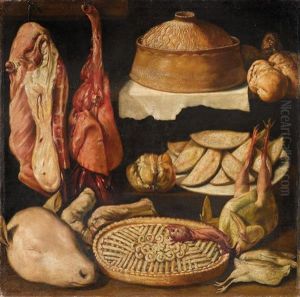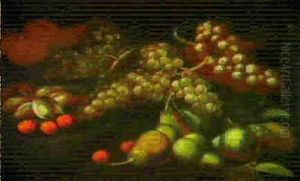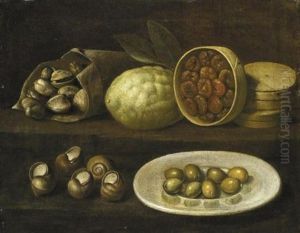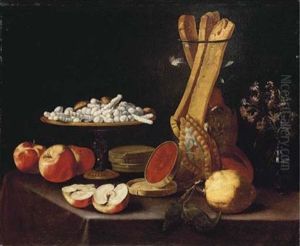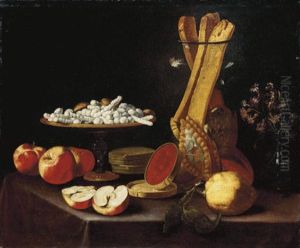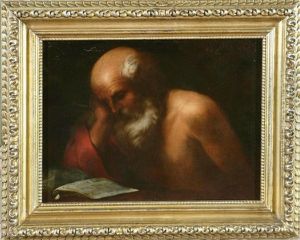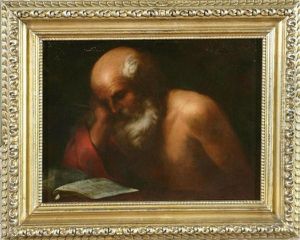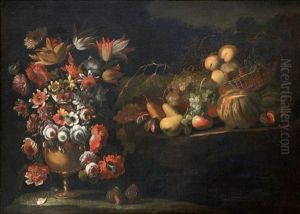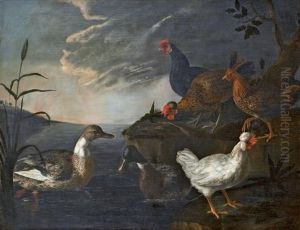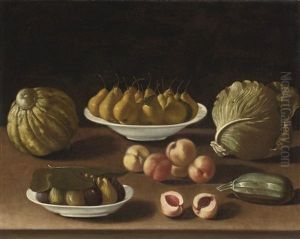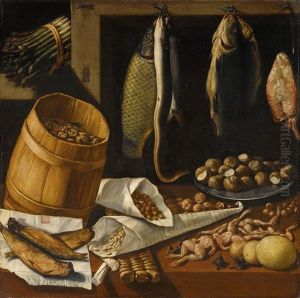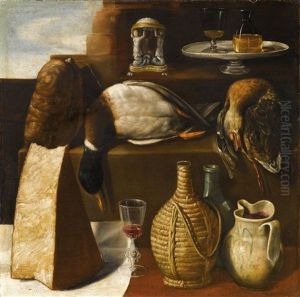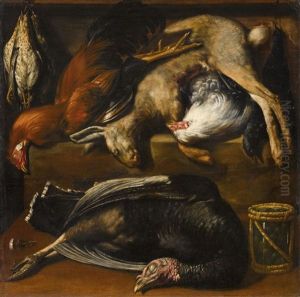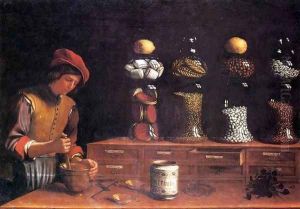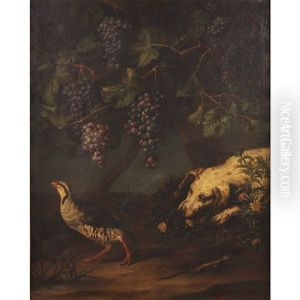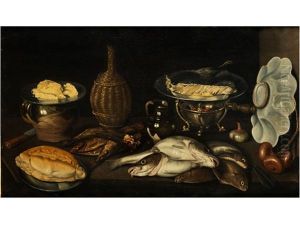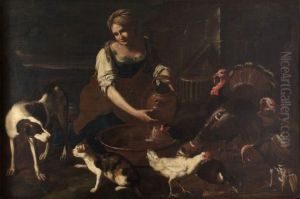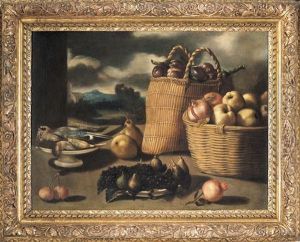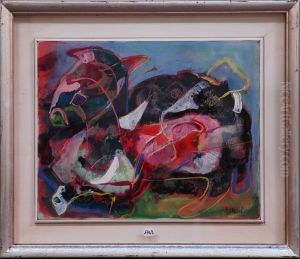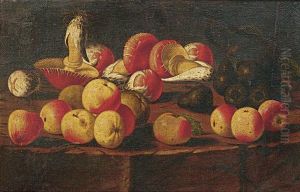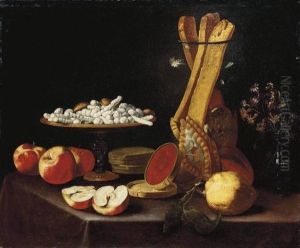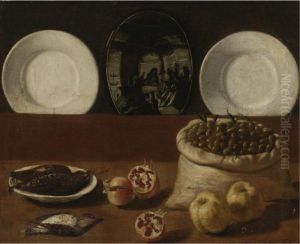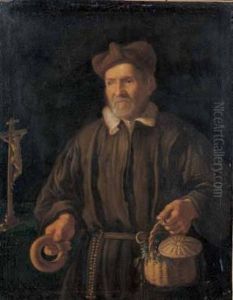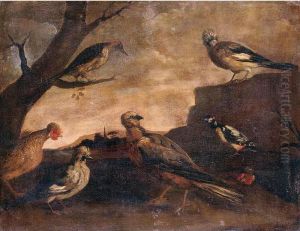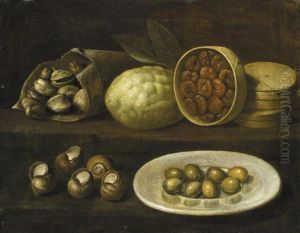Paolo Antonio Barbieri Paintings
Paolo Antonio Barbieri was an Italian painter who is best known for his still life paintings. Born in 1603 in Bologna, Italy, he was the brother of the more famous Giovanni Francesco Barbieri, also known as Guercino. The two brothers were active during the Baroque period, which was characterized by its dramatic use of light and shadow, and intense emotional expressions in art.
Paolo Antonio's artistic career was heavily influenced by his brother Guercino, under whom he initially trained. The siblings collaborated on several projects, and Paolo Antonio's contribution often involved painting the still life elements within larger compositions. He developed a distinct style, focusing on kitchen scenes and market stalls, which featured an array of fruits, vegetables, and other food items rendered with meticulous detail and a rich palette.
Despite living in the shadow of Guercino's success, Paolo Antonio Barbieri was able to carve out his own niche in the world of still life painting. His work was not limited to food items; he also painted musical instruments and weaponry, showing versatility in his choice of subject matter. His still life paintings are noteworthy for their realism and the tactile quality of the depicted objects, which he achieved through careful observation and skillful brushwork.
Paolo Antonio Barbieri remained in Bologna for most of his life, where his work was well-received by patrons and collectors. He did not achieve the same level of fame as his brother, but his contributions to the still life genre were significant in their own right. His paintings are now considered valuable examples of 17th-century Italian still life art.
His death in 1649 marked the end of a career that had been dedicated to the pursuit of realism and the perfection of still life painting. Today, Paolo Antonio Barbieri's works can be found in various art collections and museums, where they continue to be appreciated for their beauty and historical value.
